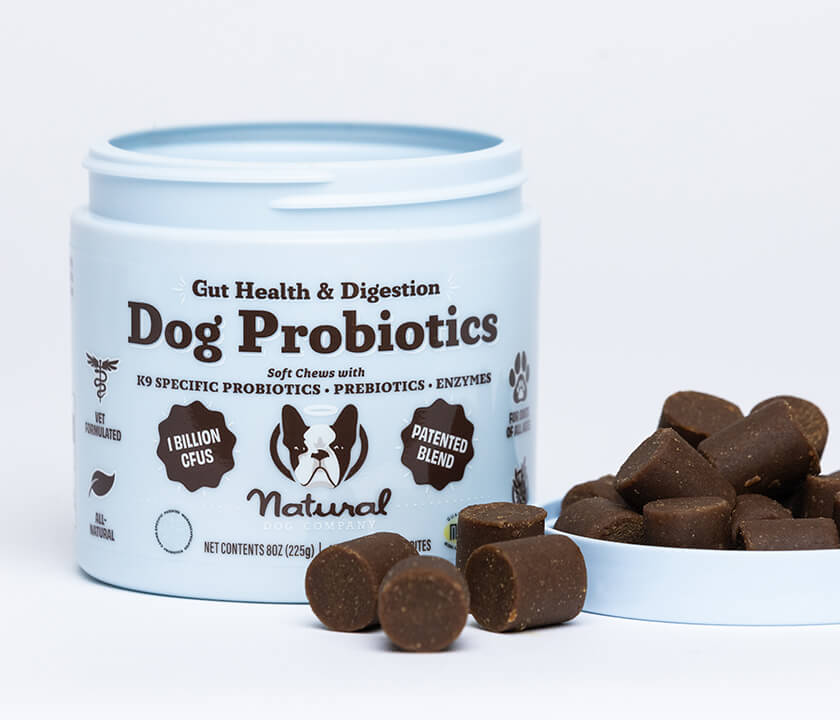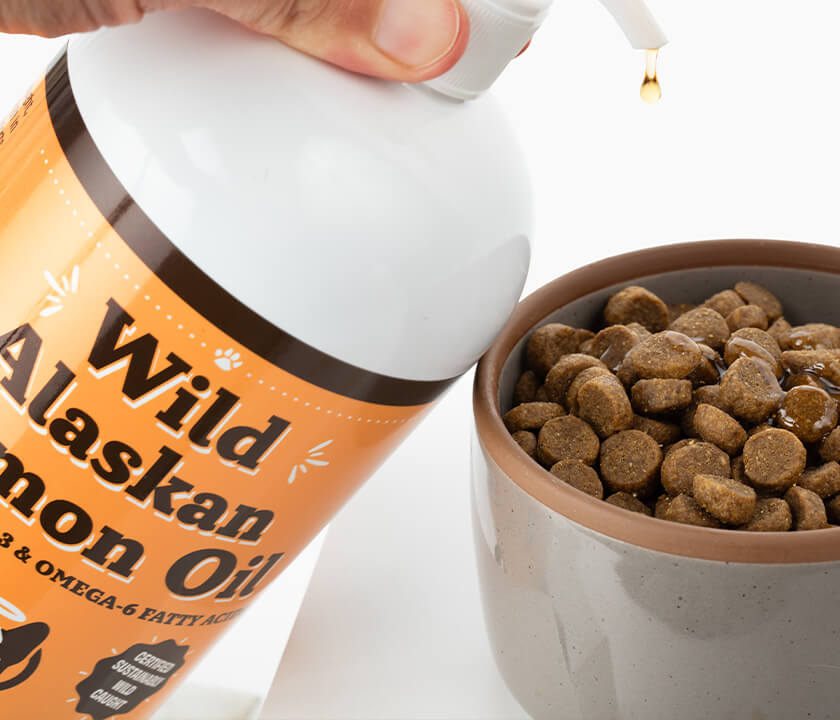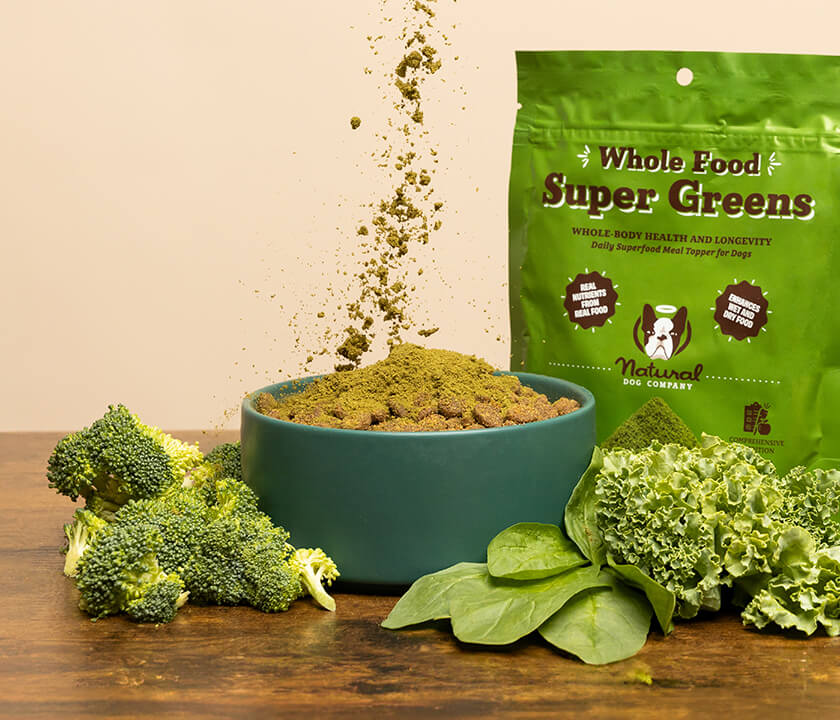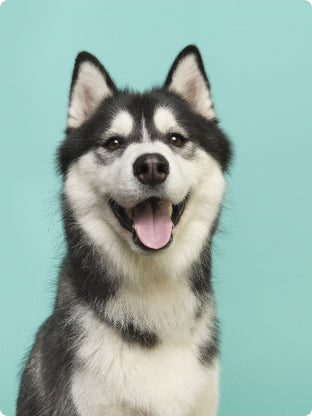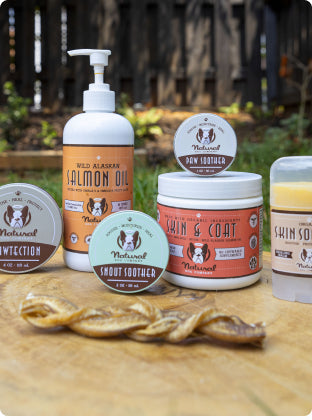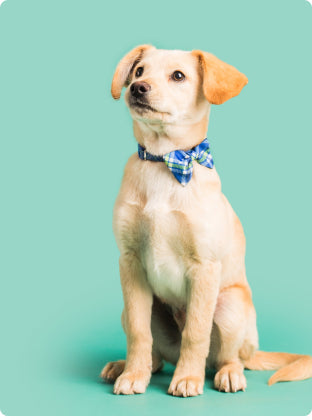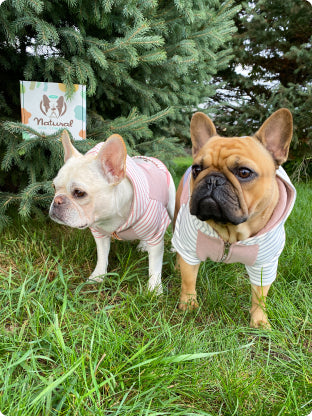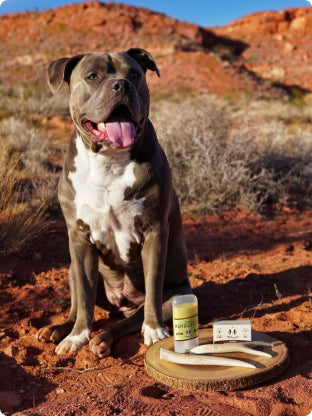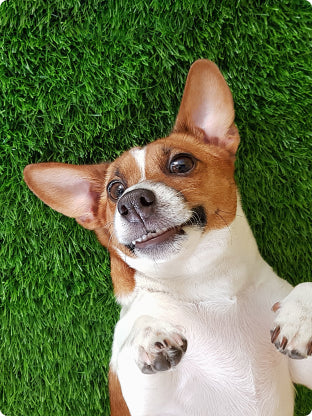Why Is My Dog Shedding?
There’s no denying the fact that we’re crazy about our four-legged family members, but pet ownership also comes with some legitimate downsides. According to the National Pet Owners Survey conducted by the American Pet Products Association (APPA), shedding is the second most cited drawback of owning a dog, only after their short lifespan. That helps explain the spike in popularity of so-called hypoallergenic breeds — such as poodles and poodle mixes — which are said to shed less.

Shedding may be one of the biggest drawbacks of pet ownership, but there are some great ways to help keep it under control.
But there are still millions of ultra-lovable and shed-prone dogs out there, and finding ways to deal with all that extra hair can help us enjoy our pets to their fullest. While some shedding is inevitable, even for hypoallergenic breeds, there are some ways to help manage all the hair for a cleaner, healthier household and a happier pup.
In this guide, Natural Dog Company hopes we can shed some light on why your pet might be shedding more than usual and help you comb through some great ideas on how to address it.
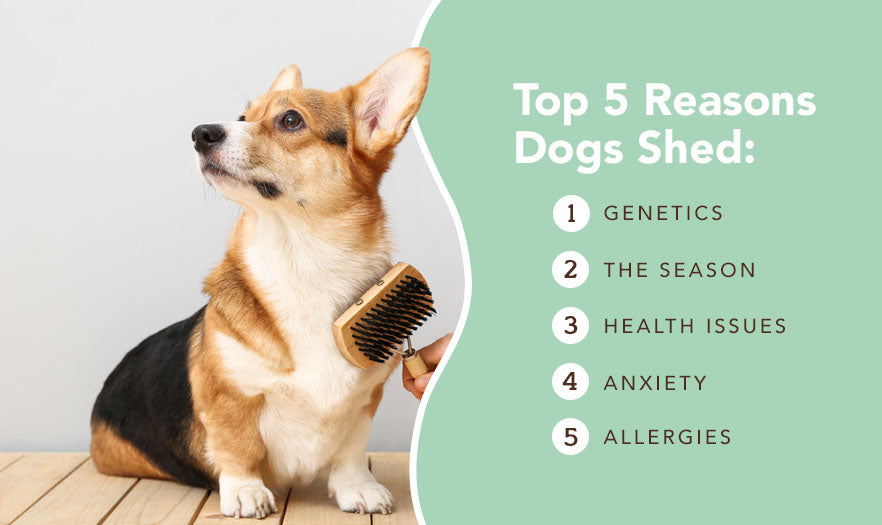
The Top 5 Reasons Why Dogs Shed
Addressing the Dalmatian in the room starts with figuring out why the shedding is happening to begin with. First, it’s important to note that shedding is a natural process that’s beneficial to your pet, so don’t dread it too much. Your dog’s fur helps control their body temperature and protects their skin, keeping them warm in the winter and safe from the damages of the sun in the summer. It’s also one of the things that makes them so soft and enjoyable to pet.
When the fur stops growing, it naturally sheds and starts growing anew. This helps get rid of the old, damaged fur that’s no longer doing your dog any good while also helping to generate thicker or thinner coats to accommodate seasonal changes. This results in newer, healthier strands that do a better job of protecting your pup in any environment and season. While all dogs shed at least a little bit, there are some primary reasons why some leave more fur on your leggings than others.
1. Dog DNA and Breed: Genetics
Just like with humans, a dog’s hair is defined by their genes. Certain breeds will naturally shed more than others. Double-coated and long-haired breeds will leave more loose hair around the house than their single-coated, short-haired cousins. Breeds with a double coat, including Samoyeds, huskies, Pomeranians, golden retrievers, labs, Bernese Mountain dogs, and others, have two layers of fur: a dense overcoat and a longer topcoat. These breeds shed more often and require more grooming than others.
2. Environmental Excess: Seasonal Shedding
When you consider it from a seasonal perspective, dog shedding is quite an amazing process. Imagine if you could grow a natural fur coat each year when the temperatures drop! Many breeds shed their undercoats during spring to get rid of their winter coats and grow a thinner, more breathable coat during the hot weather months. In the wintertime, their coats thicken up again to protect them from the cold.
Other dog breeds shed more year-round or in the spring and fall to help maintain a healthy coat throughout the year. Seasonal and breed-related shedding are totally normal, but if you see anything outside of this, it may be cause for concern.
3. The Hairy Truth: Health and Wellness
Your pet’s health is often reflected in their fur’s thickness, evenness, and sheen. Unfortunately, many health issues can lead to abnormal shedding and bald patches, including cases of fleas, lice, mites, and ringworm. Itchy spots can lead to “hot spots” that bother your pup, causing bald spots and shedding in big clumps.
Other health concerns, including dermatitis, fungal infections, immune diseases, and cancer, can cause your dog to shed more than usual. Be sure to keep an eye out for any abnormal shedding that falls outside of the typical seasonal or genetic factors.
4. Mental Health: Stress of Anxiety
While we can never know exactly how our pets are feeling, they have a few natural defense mechanisms that can give us clues into their mental and physical wellness. One such signal is shedding. When your dog gets stressed, nervous, or anxious, their nervous system releases a spike of adrenaline, which causes them to shed more. This is why you may notice an extra layer of fur on your car seat after a trip to the vet or groomer. If your pet exhibits other signs of stress, it may be time to see your vet.
5. Scratchy Triggers: Allergies
Many pups are prone to allergies that can inflame their skin and cause them to shed excessively. Seasonal allergies triggered by plant and tree pollens can cause itchy skin and hot spots that lead to extra loose fur around the house, as well as stubborn bald spots. Some pets may also experience similar issues caused by allergens in their food, as well as environmental factors such as mold and dust in the home.
If you’ve noticed that your dog is shedding more than usual, you’ll want to make an appointment with the vet. Regular shedding is completely normal and part of pet ownership, but it can also be an indicator of stress, anxiety, or a health condition.
How to Deal with All That Extra Fur
As we’ve already covered, there’s no way to prevent a dog from shedding entirely. And, since it’s a natural process that keeps them safe and healthy, nor would we want to do that. However, there’s no denying that all the shedding can introduce some issues for you and all members of your household, especially those with pet dander allergies. Managing the problem can help keep your house and clothes clean of extra fur, can help keep your family comfortable, and can prevent serious issues with your pet later on.

Brush Regularly with the Right Tools
Brushing your dog frequently will help ensure that the excess fur is collected and disposed of so it doesn’t wind up collecting on your upholstery or in dust bunnies on the floor. Regular brushing also helps keep your pet’s fur clean and prevents itchiness and discomfort. The key is to make sure you have a brush in your stash of dog grooming products that is designed specifically for your dog’s fur type.
- For short-haired dogs, (including Labradors, Bulldogs, Pugs & Boxers), brush twice per week with a short-bristled brush or rubber brush. If your pup is nervous about being brushed, consider using a glove brush with rubber bristles to make them feel like they’re being petted.
- For medium-haired dogs, (including Australian Shepards, Terriers & Spaniels), brush three times per week with a pin brush with slim, metal bristles. This will help remove excess hair while detangling knots that are common with medium-haired breeds.
- For long-haired dogs, (including Bernese Mountain Dogs & Golden Retrievers) brush daily with a metal bristle brush, a slicker brush, or a rake brush to untangle tough knots. You will also want to use a comb brush (such as FURminator), if your dog has a double coat.

Bathe with a Skin-Healthy Shampoo
Regular bathing is another great way to ensure that loose fur doesn’t wind up all over your house. But how often should you wash your dog to keep the shedding in check? It all depends on your pup’s breed, coat and skin condition, activity, and the natural environment where they spend their most time. If your dog is dirty, smelly, in the midst of seasonal shedding, or has come into contact with an irritant, it’s time for a bath. Here’s how to bathe your pup for better fur control:

Using an itch-relieving shampoo can wash away irritants and cut down on the itch-related shedding.
- Choose a dog shampoo that helps control itching. Not only will this help get rid of excess fur, but it will also soothe your pup’s skin so they’re not tempted to scratch, which will only worsen shedding.
- Work up a rich lather with your shampoo and use a gentle bathing brush to detangle and work through the undercoat. A good-quality shampoo will help condition fur so it’s easier to brush through. Just make sure to use a gentle bathing-friendly brush (such as a rubber-bristled brush) so that it doesn’t damage your dog’s coat or skin in the process.
- If you’re bathing in the bathtub, make sure to use a drain catcher so you don’t clog your pipes with all that excess fur. Check your area for pop-in dog wash facilities if you want to keep things clean at home.
- Consider investing in a forced-air dryer. If you want to eliminate professional grooming and amp up your collection of at-home gear, consider investing in a forced air dryer to dry your pup. These dryers, which are surprisingly affordable, not only dry your pet fast, but many come with rake and brush tools to help remove even more fur.
- For double-coated dogs, be sure to dry your dog and finish with an undercoat rake. Scrubbing during bath time will loosen some trapped fur and make it easier to access that buried undercoat, so now is a good time to use your rake or comb brush to attack the undercoat. Make sure to always let your pet’s hair dry completely before using this type of brush.
Browse Our Selection of Natural Dog Shampoos
Don’t Forget the Supplements

A high quality skin and coat supplement can provide nutritional support for healthy coats!
While there’s no magic pill your pup can take to stop the shedding, there are some great supplements that can help enrich their skin and coat. Integrating a dog skin and coat supplement into their daily diet can provide nutrients that supports your dog's coat health.
Look for supplements like salmon oil that has omega-3 and omega-6 fatty acids and DHA to keep your dog’s coat and skin healthy. You’ll also want to make sure you cut out anything that may be worsening your pet’s skin allergies, such as topical flea medication or dust in your home.
Know the Rules of Shaving
Giving your dog a buzz cut is a seemingly simple way to fix your shedding problem, but think twice before you wield the clippers. Generally, it’s not a good idea to shave a dog, especially if they have a double coat. The American Kennel Club (AKC) warns that, contrary to what you might expect, shaving a double-coated dog can make it harder for them to cool themselves when it’s hot out.
What’s more, you should never cut any dog’s coat — double-coated or otherwise — to less than an inch, as this leaves them exposed to sun damage and bug bites. If this is something your vet recommends for your specific dog breed, make sure to see a professional groomer for the job.
Trust the Groomer

Regular trims by the groomer can help keep shedding at bay, but be careful with the clippers — shaving isn’t recommended!
Groomers are the pros when it comes to de-shedding your pup, so it’s always a good idea to take them into the paw spa at least a couple of times a year. While at-home bathing and brushing are still critical, seeing your groomer can help keep your pet’s fur to a reasonable (and safe) length. Your groomers will be able to trim your dog’s topcoat around the stomach, legs, tail, and toes, which will help control shedding and keep them looking fresh. They will also have access to a forced air dryer, which helps blow out your dog’s undercoat and get rid of even more fur.
Ultimately, addressing excessive shedding comes down to increasing grooming frequency, using products targeted at de-shedding, and prioritizing your pet’s general health. Natural Dog Company has an excellent variety of dog grooming products and health essentials to help you keep your dog healthy and your home free of perpetual fur blankets!
